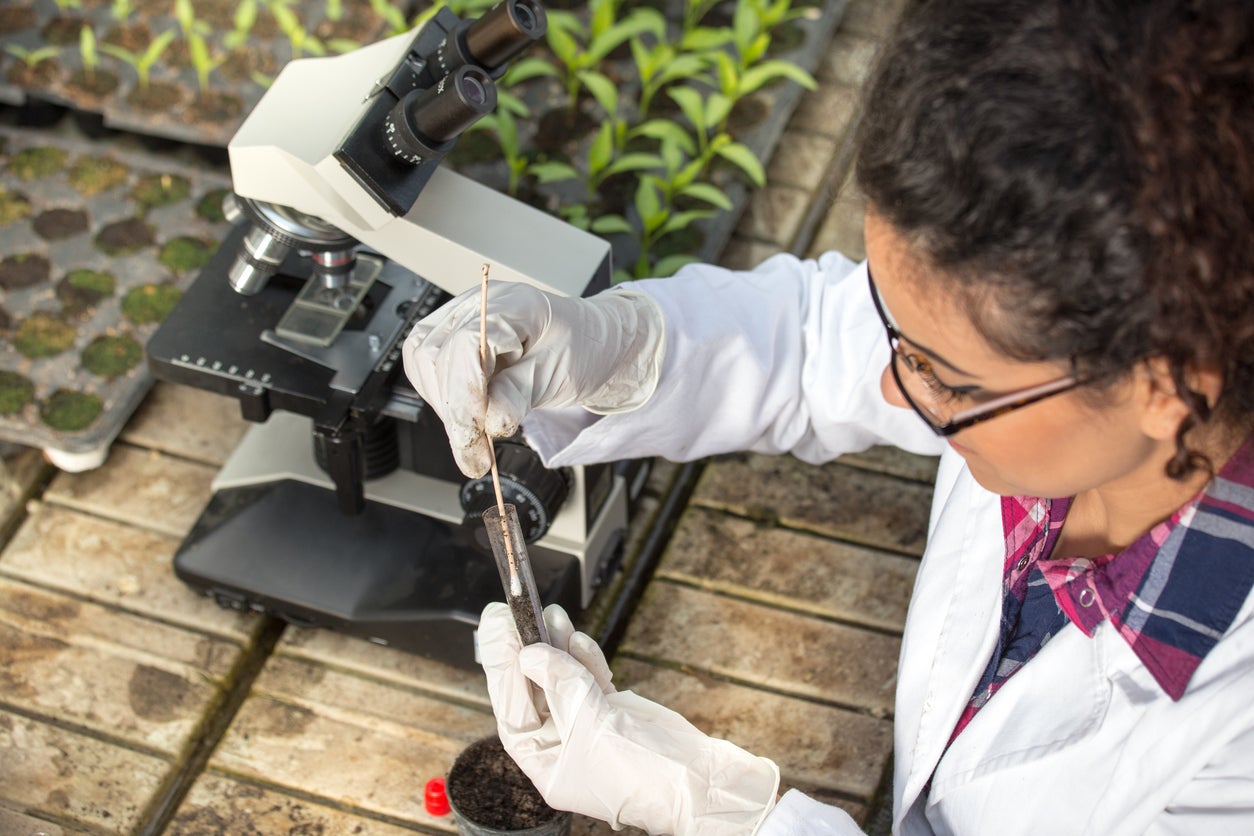Checking Garden Soil: Can You Test Soil For Pests And Diseases


Pests or disease can quickly ravage through a garden, leaving all our hard work wasted and our pantries empty. When caught early enough, many common garden diseases or pests can be controlled before they get out of hand. In some cases, however, catching specific diseases in order to control them is necessary before the plants are even put in the ground. Testing soil for pests and diseases can help you avoid many host specific disease outbreaks.
Soil Testing for Garden Problems
Many common fungal or viral diseases can lay dormant in the soil for years until environmental conditions become just right for their growth or specific host plants are introduced. For example, the pathogen Alternaria solani, which causes early blight, can lie dormant in soil for several years if no tomato plants are present, but once planted, the disease will begin to spread. Soil testing for garden problems such as this before planting the garden can help prevent disease outbreaks by giving us a chance to amend and treat the soil or select a new site. Just as soil tests are available to determine nutrient values or deficiencies in the soil, soil can also be tested for disease pathogens. Soil samples can be sent to laboratories, usually through your local university extension cooperative. There are also field tests you can purchase online or at local garden centers for checking garden soil for disease pathogens. These tests use a scientific system known as the Elisa test and usually require you to mix soil samples or mashed plant matter with different chemicals that react to specific pathogens. Unfortunately, these tests for soil quality are very specific for certain pathogens but not all. Several tests or test kits may be required to diagnose a plant disease. Viral diseases require different tests than fungal diseases. It can save a lot of time, money, and frustration to know what pathogens you are testing for.
How to Test Soil For Disease or Pests
Before sending a dozen soil samples to labs or spending a fortune on test kits, there’s some investigating we can do. If the site in question has previously been a garden, you should consider what diseases and pests it has experienced before. A history of fungal disease symptoms can certainly help narrow down what pathogens you need to test for. It is also true that healthy soil will be less susceptible to disease and pests. It is because of this, Dr. Richard Dick Ph.D. developed the Willamette Valley Soil Quality Guide with 10 steps to test the soil's quality and disease resistance. The steps all require digging, prodding, or poking the soil to test for the following:
- Structure and Tilth of the soil
- Compaction
- Soil Workability
- Soil Organisms
- Earthworms
- Plant Residue
- Plant Vigor
- Plant Root Development
- Soil Drainage from irrigation
- Soil Drainage from rainfall
By studying and monitoring these soil conditions, we can identify disease prone areas of our landscape. For example, areas with compacted, clay soil and poor drainage will be ideal locations for fungal pathogens.
Sign up for the Gardening Know How newsletter today and receive a free copy of our e-book "How to Grow Delicious Tomatoes".

Darcy is a former contributor to Gardening Know How. She is a professional landscape designer and gardening writer with experience in plant sales. An avid gardener, Darcy has a passion for sharing practical tips to help others grow.